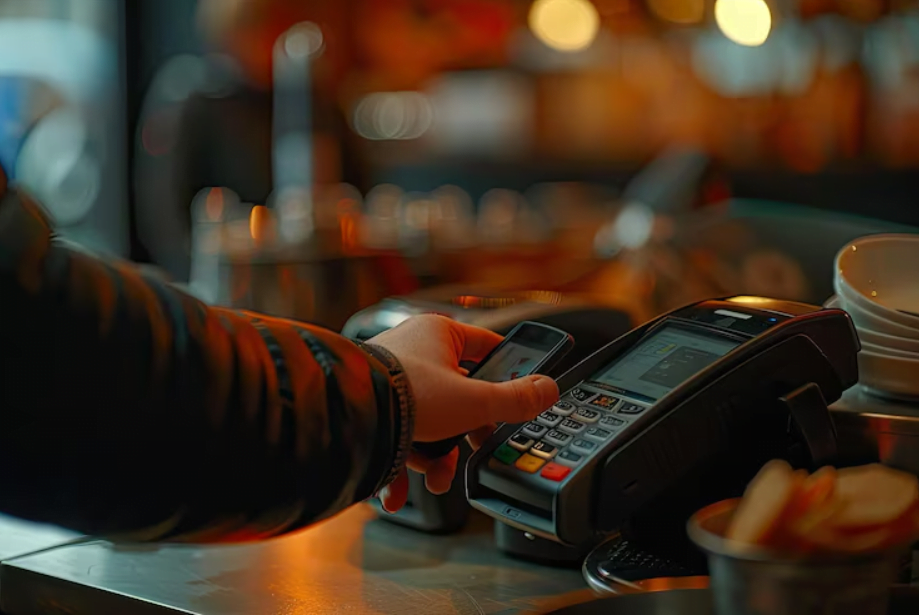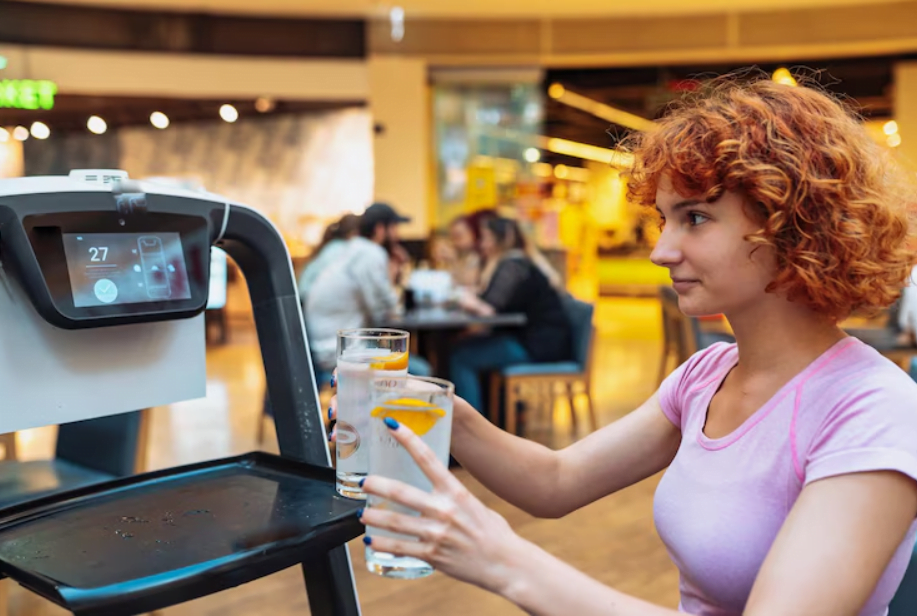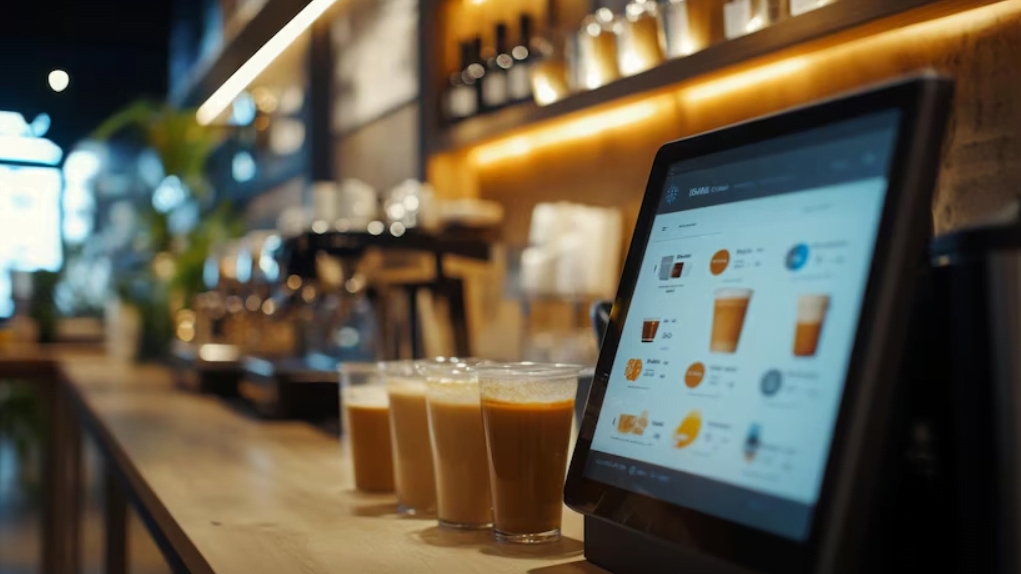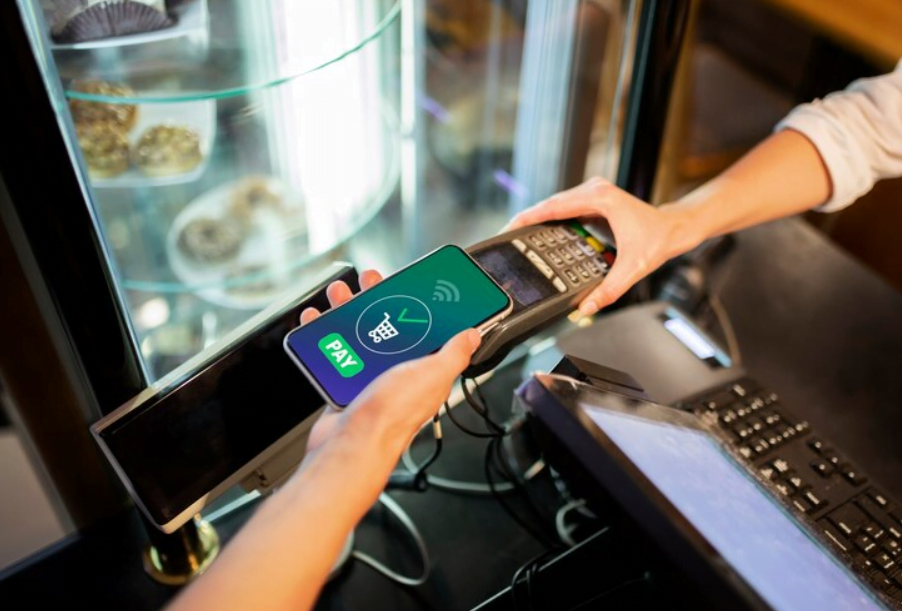Picture this: You walk into a busy convenience store and head straight to a sleek, interactive kiosk. With a few taps, you browse the store’s entire selection, customize your choices, and pay—all without standing in line. The kiosk not only speeds up your shopping but also helps the store gather insights on popular items and peak times. It’s a quick, efficient, and smart way to shop.

Self service kiosks have transformed the way businesses interact with customers, offering a modern and efficient alternative to traditional service methods. At its core, a self-service kiosk is an interactive touchscreen or tablet that allows customers to perform tasks independently without the need for staff intervention. This technology has become increasingly popular in various industries, from retail to hospitality, due to its ability to streamline operations and enhance customer satisfaction.
Self-service kiosks have gained immense popularity, with global self-checkout units projected to reach 1.2 million by 2025, reflecting the increasing demand for automated solutions.
But what exactly are they, how do they work, and what types are available? Let’s dive into the world of self-service kiosks and explore the best options available in the market and how they can benefit and smoothen the functionalities of your business.
What is a Self- Service Kiosk?
A self service kiosk is an interactive digital terminal equipped with a touchscreen or tablet interface that allows users to perform tasks and access services independently, without direct human interaction. This technology integrates hardware and software components to provide a range of functionalities, such as ordering, payment, information retrieval, and check-in.
By automating routine processes and transactions, self-service kiosks enhance operational efficiency, reduce wait times, and improve customer experience. They are commonly used in various sectors, including retail, healthcare, transportation, and hospitality, to streamline operations and offer a more convenient, user-driven service experience.

Why Use Self Service Kiosks?
Opting for self-service kiosks in the retail industry and convenience stores is driven by several reasons. Firstly, they address the need for quicker and more efficient customer service during peak hours, reducing long wait times at checkout. Secondly, they help manage high transaction volumes without requiring additional staff, thereby lowering labour costs. Thirdly, kiosks offer customers greater control over their shopping experience, allowing for customisation and self-service options that enhance satisfaction. Finally, they provide valuable data insights into shopping behaviors and preferences, enabling better inventory management and targeted promotions.
How Do Self Service Kiosks Work?
Self-service kiosks function through a combination of hardware and software components that work in tandem to deliver a seamless user experience. These kiosks are designed to be intuitive and user-friendly, allowing customers to complete transactions quickly and efficiently.
Hardware Components
- Touchscreen or Tablet: The primary interface, often an iPad or Android tablet, is housed in a secure enclosure to prevent tampering and theft. Tablets are popular due to their affordability, ease of use, and reliability.
- Peripherals: Depending on the kiosk’s function, additional peripherals like thermal printers, card readers, and scanners may be included to facilitate tasks such as printing receipts or processing payments.
Software Components
- Kiosk Software: This software locks the device to a specific application or program, ensuring a streamlined user experience. Many kiosks run on web-based interfaces accessed through specialized browsers.
- Customisation: While some prefer complete turnkey solutions (both hardware and software from a single provider), sourcing them separately can offer greater flexibility and allow for tailored solutions to better meet specific needs.

Installation Time
Physical installation of a kiosk can be completed in about an hour. However, planning and deployment can take several months, depending on the project size and complexity. Key phases include scoping, prototyping, and full deployment.
Types of Self-Service Kiosks
Self-service kiosks come in various forms, each designed to cater to different needs and industries. Understanding the different types of kiosks can help businesses choose the right solution for their operations.
1. Self-Order Kiosks
Self-order kiosks are designed to streamline the ordering process by allowing customers to place their own orders through a touchscreen interface. It reduces the need for human cashiers, speeds up service, and provides customers with a convenient way to customize their orders and make payments.
The main features of self-order kiosks are:
- Minimizing wait times and handling multiple transactions simultaneously, self-order kiosks enhance overall efficiency and customer satisfaction.
- Additionally, these kiosks often feature upselling prompts, encouraging customers to add extra items to their orders, thereby increasing the average transaction value.
Self-Order Kiosks and the Convenience Stores
- Self-order kiosks let customers browse products, customize selections, and complete transactions without waiting in line.
- They are particularly beneficial during busy times, helping to reduce wait times and improve customer satisfaction.
- Kiosks can be programmed to suggest complementary items, which can increase average transaction values.
2. Check-in Kiosks
Check-in kiosks facilitate the registration or check-in process in various settings, such as healthcare facilities, airports, and hotels. These kiosks allow users to check in for appointments, print boarding passes, or access their hotel rooms without waiting in long lines.
The main features of check-in kiosks are:
- Check-in kiosks are to improve operational efficiency by automating routine check-in procedures, thereby reducing congestion and wait times at counters.
- They also provide a touchpoint for users to update their information and receive relevant updates.
Check-in Kiosks and the Convenience Stores
- Check-in kiosks may not be as relevant for typical convenience stores but could be useful in stores with a loyalty or membership program.
For example, a convenience store chain with a loyalty program could use check-in kiosks to allow members to check in, redeem points, or receive personalized offers. This would streamline the loyalty process and enhance the overall shopping experience.

3. Ticketing Kiosks
Ticketing kiosks enable customers to purchase tickets for events, transportation, or attractions without having to wait in line at a ticket counter. These kiosks are commonly found in movie theaters, theme parks, museums, and public transportation hubs.
The main features of ticketing kiosks are:
- To offer a fast, convenient, and self-service option for buying tickets, thus reducing the need for staff intervention and speeding up the ticket purchasing process.
- They help manage high volumes of ticket sales efficiently and improve the overall customer experience.
Ticketing Kiosks and the Convenience Stores
- While ticketing kiosks are more common in venues like theaters and theme parks, they could be adapted for convenience stores that offer lottery tickets, event tickets, or gift cards.
- Implementing a ticketing kiosk in this context would streamline the purchase process for these items, reducing lines at the cashier and improving customer convenience.
4. Bill Payment Kiosks
Bill payment kiosks are designed to provide customers with a self-service option for paying bills, such as utility bills, parking fines, or other types of payments. These kiosks are often located in public areas like grocery stores, retail and convenience stores, parking garages, and courthouses.
The main features of bill payment kiosks are:
- To offer a convenient alternative to traditional payment methods, allowing customers to handle payments outside regular business hours and reducing queues at payment counters.
- They make it easier for customers to manage their financial transactions quickly and efficiently.
Bill Payment Kiosks and the Convenience Stores
- Bill payment kiosks can be highly beneficial in convenience stores, especially those located in areas with high foot traffic.
- These kiosks can offer customers a convenient way to pay bills for their purchases or other payments outside traditional business hours.
- By providing this service, convenience stores can attract more customers and increase foot traffic, potentially driving additional sales.
5. Wayfinding Kiosks
Wayfinding kiosks assist users in navigating large or complex environments by providing interactive maps and directories. These kiosks are typically found in shopping malls, airports, universities, and other large venues.
The main features of wayfinding kiosks are:
- To help visitors locate specific destinations, services, or points of interest within a large space.
- By offering detailed maps and step-by-step directions, wayfinding kiosks enhance the user experience and make it easier for visitors to find their way around.
Wayfinding Kiosks and the Convenience Stores
- Wayfinding kiosks are less relevant for smaller convenience stores due to their relatively straightforward layout.
- However, for larger convenience store chains or stores located in shopping malls, these kiosks could help customers locate specific products or services within the store.
- This can improve the shopping experience and help customers find what they need more efficiently.
The Best Self-Service Kiosk Model - MPOS
In the fast-paced world of retail, particularly within convenience stores, efficiency, and customer satisfaction are paramount. MPOS Self-Service Kiosk is engineered to transform your store’s operations, setting a new standard in the industry. Here’s why these kiosks stand out as the best models for modern retail environments:
1. Maximize Your Profits with Self-Checkout
MPOS Self Service Kiosk transform the checkout experience by enabling customers to scan and pay for their items quickly. This streamlined process cuts down on wait times during peak hours, enhances customer satisfaction, and increases throughput.
Imagine a busy Saturday with long lines—MPOS kiosks handle multiple transactions simultaneously, freeing up staff to focus on more complex tasks and improving overall efficiency.
2. 24/7 Availability for Ultimate Convenience
Operating around the clock is a major advantage for convenience stores. MPOS Self Service Kiosk ensure that your store is never closed for business. Even during late-night hours when staff may be limited, customers can browse products, make purchases, and even access promotions—boosting sales and customer loyalty without additional labor costs.
3. Cutting Staffing Costs
Reduce the need for multiple checkout counters by automating the payment process with MPOS kiosks. During non-peak hours, this leads to significant labour cost savings. Many businesses report that self-service kiosks pay for themselves quickly by reducing labor costs and boosting sales efficiency.
For instance, during quieter times, a single kiosk can handle the workload of multiple cashiers, allowing you to allocate staff more efficiently and save on wage expenses.

4. Secure and Efficient Transactions
MPOS kiosks are equipped with advanced security features, including integrated chip and PIN card payment options. This reduces cash handling, minimizing risks associated with theft and loss.
Additionally, with self-scanning capabilities, customers enjoy a more secure and hassle-free checkout experience, while your store benefits from improved operational efficiency.
5. Boost Customer Loyalty with Integrated Loyalty Programs
Link MPOS kiosks to your store’s loyalty program to effortlessly reward returning customers. Shoppers can easily accumulate points, redeem rewards, or access exclusive discounts right at the kiosk. This integration not only enhances customer satisfaction but also drives repeat business and increases customer retention.
6. Simplified Product Navigation
MPOS kiosks feature intuitive interfaces that allow customers to quickly search for products, view detailed information, and navigate your store’s inventory. This user-friendly experience ensures that even first-time visitors can easily find what they need, leading to a more satisfying shopping experience and increased sales opportunities.
Why MPOS Self-Service Kiosks Are the Ultimate Choice for Convenience Stores
MPOS Self Service Kiosks are not just a technology upgrade—they are a game-changer for convenience stores. By integrating these kiosks, you enhance efficiency, improve customer satisfaction, and drive profitability, all while staying ahead in the competitive retail landscape.
Other Notable Self-Service Kiosk Models
Several manufacturers offer self-service kiosk models, each with unique features and benefits. Here are some of the most notable models available on the market today:
1. Acante
Acante’s self-service kiosks are known for their high-quality touchscreens, sleek design, and robustness. These kiosks are ideal for use in retail, healthcare, and transportation, where reliability and durability are essential. Acante’s kiosks offer a user-friendly interface that makes it easy for customers to interact with the system, whether they’re making a purchase or checking in for an appointment.
2. Grafterr
Grafterr focuses on providing self-service kiosks that offer intuitive menu customization and reduce queue times. These kiosks are particularly popular in the hospitality industry, where quick and efficient service is paramount. Grafterr’s kiosks are designed to enhance the customer experience by streamlining the ordering process and reducing the time customers spend waiting in line.
3. Cammax
Cammax offers adaptable and customizable self-service kiosks that can be tailored to meet the needs of various sectors, including healthcare, retail, and transportation. Cammax’s kiosks are known for their flexibility, allowing businesses to add or remove features as needed to create a solution that fits their specific requirements.
4. Evoke
Evoke’s self-service kiosks are recognized for their reliability and scalability, making them a popular choice for businesses that handle high volumes of transactions. Evoke’s kiosks are commonly used in fast-food restaurants, where they help streamline the ordering process and reduce wait times.
5. Clover
Clover partners with multiple manufacturers to provide tailored kiosk solutions for businesses across various industries. Clover’s kiosks are known for their versatility, offering a range of features and functionalities that can be customized to meet the unique needs of each business. Whether you’re looking for a simple self-order kiosk or a complex check-in system, Clover has a solution that can help you achieve your goals.
Tips for a Successful Kiosk Project
Here are the three useful tips to follow in order to achieve successful self-service kiosk installation at your business:
1. Define and Track Goals
For a successful self-service kiosk project, it’s essential to set clear and precise objectives. Define specific, measurable, attainable, relevant, and time-bound (SMART) goals to guide your implementation.
For instance, your goals could include reducing customer wait times by 20% within the first three months or increasing average transaction value by 15% through upselling features. Regularly track progress against these goals to ensure your kiosk system is meeting expectations and delivering the intended benefits.
2. Promote Your Kiosks
Effective promotion is key to maximizing the impact of your self-service kiosks. Use clear signage within your store to guide customers to the kiosks and highlight their benefits.
Additionally, leverage in-store marketing materials, such as posters and digital displays, to educate customers on how to use the kiosks and what advantages they offer. Clear and engaging promotion helps ensure that customers are aware of the kiosks and feel confident using them, ultimately driving higher adoption rates and improving your store’s overall efficiency.
3. Choose the Right Partner
Work with experienced vendors to ensure a smooth installation and operation. Go to the vendors that provide dedicated support and expertise for a smooth installation process, ensuring that your kiosks are up and running efficiently.
By partnering with MPOS System, you receive top-notch guidance and technical assistance, from initial setup to ongoing maintenance. This not only minimizes disruptions to your store operations but also maximizes the return on your investment in self-service technology. Choose MPOS System for a hassle-free implementation and a reliable, high-performing kiosk system tailored to your convenience store’s needs.


